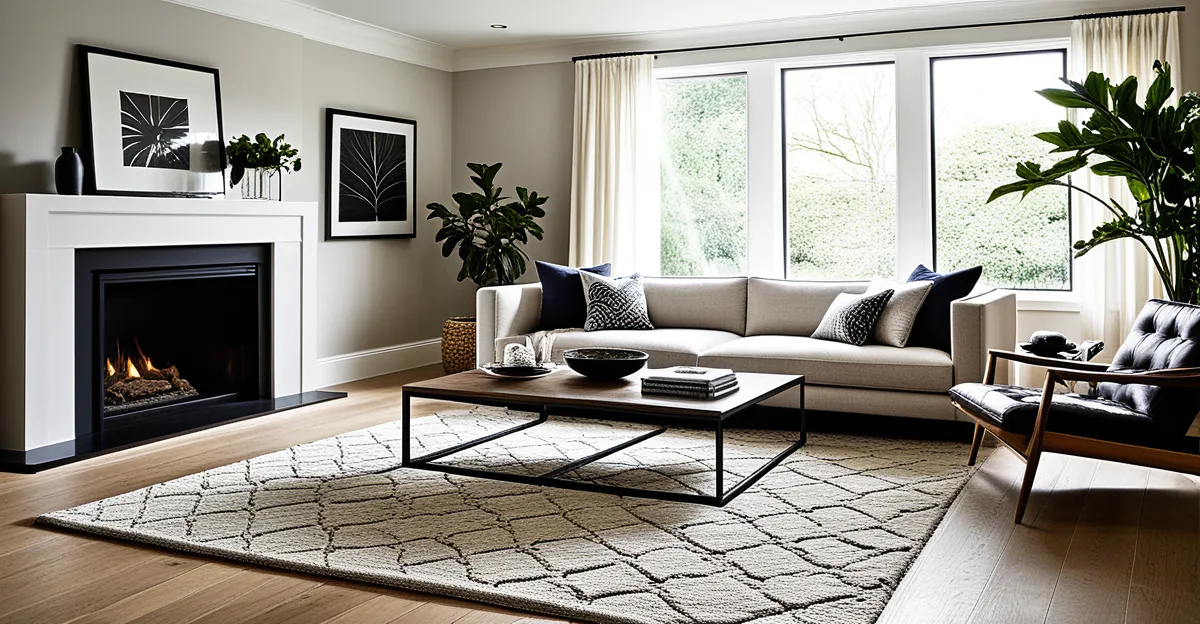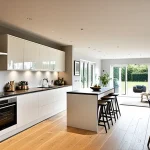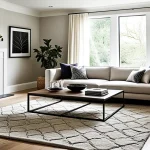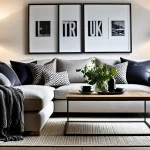Immediate Impacts of Interior Design on Well-being
Interior design profoundly affects well-being by triggering immediate psychological and physical responses. For example, color schemes influence emotions: warm hues like reds and oranges can energize, while cooler shades such as blues and greens often promote calm. Lighting also plays a critical role—natural light reduces stress and boosts mood, whereas harsh artificial lighting may cause discomfort or headaches.
The arrangement of furniture directly impacts comfort and relaxation. Thoughtful layouts that prioritize ease of movement and seating that supports proper posture enhance both physical comfort and mental ease. Even minor changes, such as adding a cozy chair or rearranging a room to create open space, can quickly improve mood and reduce stress levels.
Also to read : How Can Modern UK Homes Enhance Daily Living Comforts?
These psychological effects of design are supported by physiological responses. For instance, softer lighting may lower cortisol levels, the hormone associated with stress, while clutter-free environments prevent cognitive overload. Applied well, these design choices produce noticeable health benefits of interior environments, demonstrating that well-being is closely tied to how spaces are designed and organized.
Key Interior Design Elements That Shape Well-being
Understanding the impact of color psychology is essential for improving interior design and well-being. Colors directly influence emotions: blues and greens tend to calm the mind, while yellows and reds can increase energy and alertness. Choosing the right color scheme promotes positive psychological effects of design by setting the desired mood in a space, essential for creating a healthy home environment.
Also read : Essential UK Home Décor Trends for This Year
Lighting effects, both natural and artificial, significantly affect well-being. Natural light intake improves mood and productivity by regulating circadian rhythms, reducing fatigue, and enhancing focus. When natural light is limited, artificial lighting should mimic daylight patterns to avoid discomfort or eye strain. Proper lighting choices contribute to the overall health benefits of interior environments by supporting physical and mental health.
Furniture ergonomics and home layout also play crucial roles. Ergonomically designed furniture supports posture and reduces bodily strain, enhancing physical comfort. Additionally, clutter-free layouts facilitate easy movement, decrease stress, and create a relaxed atmosphere. These deliberate design decisions foster immediate improvements in mood and stress reduction by making daily living spaces more comfortable and mentally soothing.
Evidence-based Design Strategies to Enhance Home Well-being
Evidence-based design integrates scientific research with practical interior design choices to maximize health benefits of interior environments. Studies show that selecting calming colors like soft blues or muted greens can reduce anxiety and promote relaxation. This approach harnesses the psychological effects of design to create spaces that actively enhance mental well-being.
Optimal lighting strategies involve maximizing natural light exposure while supplementing with adjustable, warm-toned artificial lighting. This reduces eye strain and supports circadian rhythms, key factors in maintaining physical and psychological health. Using dimmers or layered lighting allows customization, addressing interior design and well-being by adapting environments to personal needs.
Stress reduction through design also includes thoughtful furniture arrangement. Positioning seating to encourage social interaction or providing serene corners for solitude can significantly improve mood. Additionally, integrating plants or natural elements has been proven to lower cortisol levels, linking design choices directly to physiological stress markers.
Practical home wellness tips based on these findings recommend starting with minor changes: repaint a room with calming hues, improve window treatments for better sunlight, or reorganize cluttered spaces. These efforts reflect interior design best practices that yield immediate and measurable improvements in home occupants’ well-being.







